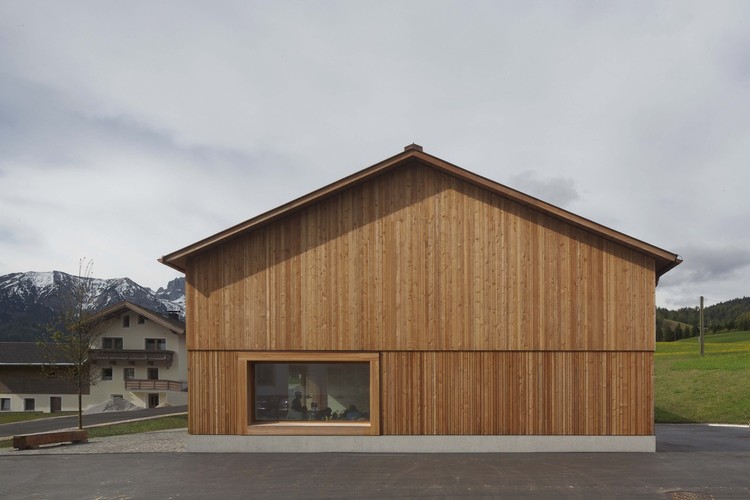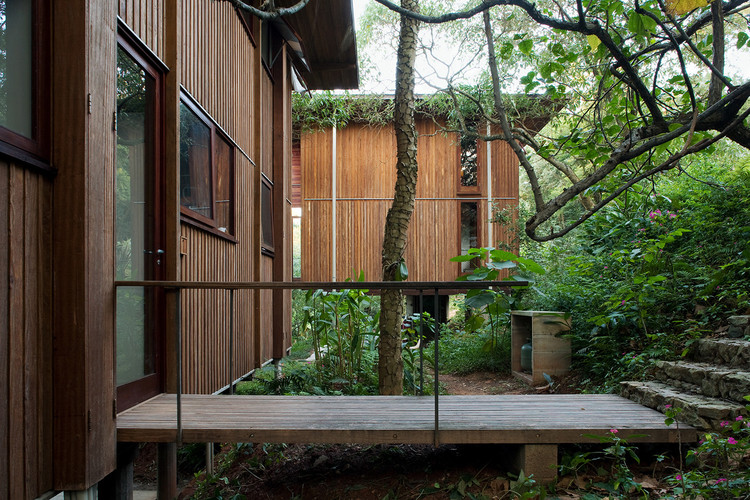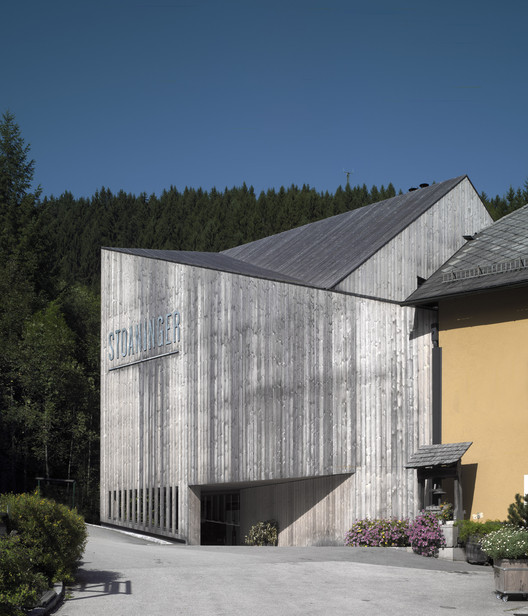
The moment a tree is cut down and its biological processes are interrupted, it can be said that the deterioration process of wood also begins. Steps such as the correct cutting of the trunk, drying and storage or the precise specification of the best species for each use will determine its durability. Composed basically of cellulose, hemicellulose and lignin, each wood species has a certain natural durability, also influenced by the environmental conditions of where it is inserted, such as temperature, humidity, oxygen content, and the microorganisms and insects present there. Generally, surface treatments are used to increase the protection of different parts, such as varnishes, oils and other chemical processes. But there are situations in which untreated wood can be used outdoors, achieving a gray and sober aesthetic that blends into the exterior and brings personality to the building.

When ultraviolet radiation from the sun comes into contact with the unprotected surface of the wood, it breaks down the lignin in the cellulose, causing photochemical degradation. The result is a change in the appearance of the wood from its original color to a gradual silvery gray glow. As Rebecca Ellison points out in her article on the effects of light on materials, some of the long molecular chains break, decreasing the degree of polymerization and weakening the material. However, she mentions that "deterioration is unlikely to have a significant effect on structural integrity as auto-oxidation only occurs at the surface." That is, if the wood is suitable for building, it will be almost intact behind its rough and gray appearance.

Although the resulting aesthetic effect is attractive, there are some precautions to be taken so that the facade does not disappoint. Firstly, not all wood species are suitable for external use, especially without treatment. Talking about types of wood is always delicate, as there are significant differences between countries, climates and even where the trees grow. The important thing to do, is to look through guides for local species which best withstand attacks from fungi and which have greater resistance to decay. When we studied some of the projects published on the ArchDaily, we observed that some species appear more frequently: mainly ash, larch, cedar and cypress, as well as some examples with oak and walnut. Softer woods such as pine or fir require treatment. According to some sources on the internet and academic research, there are woods that can withstand up to 40 years of unstable weather.


Another important point in using untreated wood, with any of the above-mentioned species, is to give preference to the heartwood - that is, the core - whenever possible. It is the darkest and most mature part of the trunk, which is stiffer and harder due to its high lignin content. The sapwood, in turn, consists of younger parts of the tree, which are lighter and still in formation and contain more water and little lignin, making them more prone to attacks by xylophages and rot.


This article by Wade Shaddy has some good tips for using raw wood in facades. In addition to the more suitable species already mentioned, he points out that keeping the wood shaded and dry will keep fungi away for longer. As they tend to multiply in wet corners, it is important that the water is drained off as quickly as possible, without accumulating at any point. Therefore, it is important to pay attention to the details of drip trays and, above all, to ensure that the wood does not remain in contact with the ground. The hotter and more humid the place, the greater importance should be given to insects and fungi. This is why we see many more examples of untreated wooden facades in cold, dry places, including buildings without eaves. But this is not a rigid rule. For example, at Vila Taguaí, a project by Cristina Xavier Arquitetura in Carapicuíba, exposed cumaru wood was used. Although it is a highly resinous and resistant species, a pronounced eave protects all facades.


In addition to concerns about the appearance and strength of untreated facades, there are recommendations for any work done with wood. When a tree is felled, it still contains a high water/moisture ratio - usually between forty to fifty percent of the water content. It is important that the parts are dried before being installed, so that they maintain their physical and dimensional integrity. Very dry woods do not bend or peel and are more durable. Another thing to take into account are the connectors - nails and screws - which, preferably, must be stainless and therefore do not leave stains on the wooden parts if they oxidize.

Even though untreated facades do not require maintenance or processing of the pieces, it is important to note that the finest wood species and parts should be prioritized. And the visual aspect, in a few years, can become one of the building's main attractions, for lovers of visible materials. Discover some more examples of facades with untreated wooden boards in this My ArchDaily folder.










